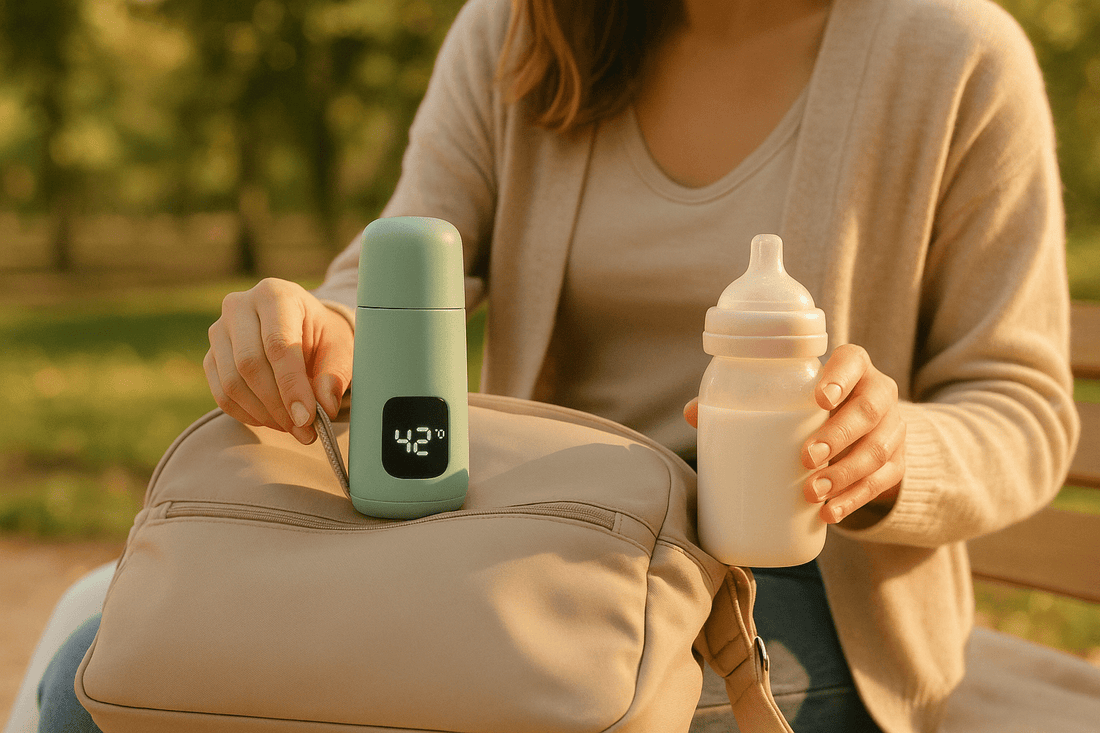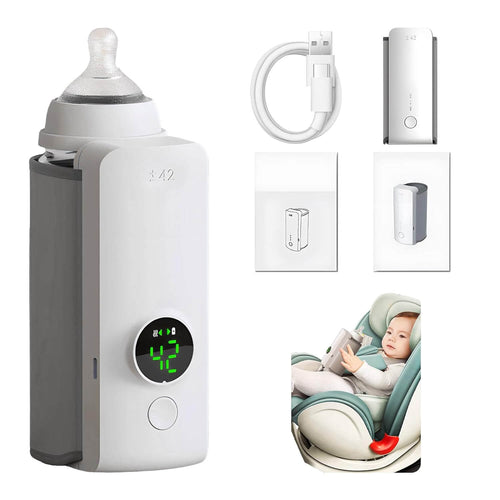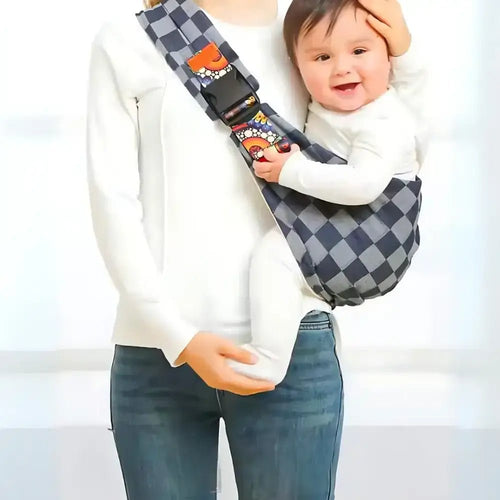
Portable Bottle Warmer for Travel Guide: Easy and Reliable Bottle Heating On-the-Go
Traveling with a baby can be stressful, especially when it comes to feeding on the go. Many parents wonder how to keep their baby’s milk warm without the hassle of finding an outlet or carrying bulky equipment. A portable bottle warmer offers a simple and reliable solution for warming bottles anytime, anywhere.

A portable bottle warmer is a compact device designed to quickly heat baby bottles while traveling, allowing parents to feed their babies warm milk without needing access to a power source. These warmers are easy to use, often rechargeable, and work well in cars, outdoors, or during trips. They provide peace of mind by making feeding more convenient no matter where families are.
With so many options on the market, it’s helpful to understand what makes a good portable bottle warmer. Knowing the right features and how to use the device safely helps parents feel confident during each feeding. This guide will help readers find the right bottle warmer that suits their needs and lifestyle.
Key Takeaways
- Portable bottle warmers make warming baby bottles easier when away from home.
- Key features like portability, fast heating, and safe temperature control matter most.
- Proper use and maintenance extend the life of the warmer and ensure safe feeding.
What Is a Portable Bottle Warmer?
A portable bottle warmer is a handy device designed to heat baby bottles quickly and safely while away from home. It allows parents to warm milk or formula without depending on a power outlet, making it perfect for travel, outdoor use, or in the car.
Definition and Main Features
A portable bottle warmer is a compact gadget that heats baby bottles using rechargeable batteries or built-in heating elements. It can warm milk in about 15 to 20 minutes. Many models keep the milk warm for several hours after heating.
Key features often include:
- Fast heating time
- Rechargeable or battery-powered operation
- Compatibility with different bottle sizes and brands
- Insulated design to keep the bottle warm longer
- Easy to clean and carry
These features make it convenient for parents who need to feed their baby on the go without the hassle of finding an electrical outlet.
Types of Portable Bottle Warmers
There are mainly two types of portable bottle warmers: electric rechargeable warmers and thermal insulated warmers.
Electric rechargeable warmers use a battery or USB charge to heat bottles. They often have temperature controls and may keep milk warm for hours. These are best for longer trips or frequent use.
Thermal insulated warmers don't require power. They work by trapping heat inside an insulated container or warm water chamber. These are lighter but may take longer to warm the bottle and don’t keep it warm as long.
Each type has pros and cons depending on how parents plan to use them during travel. For example, an electric model heats faster, while an insulated one is simpler and lighter. More details on these devices and options can be found through portable bottle warmer travel options.
Benefits of Using a Portable Bottle Warmer While Traveling

A portable bottle warmer helps keep feeding smooth when away from home. It saves time and effort by quickly heating milk or formula. It also makes sure the bottle stays at the right temperature for safe feeding. These factors help reduce stress for parents and keep babies comfortable.
Convenience and Time-Saving
Portable bottle warmers are designed to be easy to carry and use on the go. Many models fit in diaper bags or car holders, allowing quick access during trips. They heat milk fast, which is useful when babies are hungry and need feeding right away.
Using one reduces the need to find a microwave or warm water while traveling. It is more hygienic and avoids uneven heating, which can happen with other methods. Parents can warm milk anytime, whether in a car, plane, or park.
The warming process often takes just a few minutes, cutting down wait times. This saves precious travel time and helps keep a baby calm and fed. Some portable warmers even support different bottle types for added convenience.
Maintaining Safe Feeding Temperatures
Keeping milk at the right temperature is important for a baby’s health. Portable bottle warmers heat milk evenly without overheating, which preserves nutrients and prevents burns. They often come with features that alert parents when milk is too hot.
These devices help avoid feeding with cold bottles, which babies may reject or that can cause tummy upset. Heated milk also aids digestion and helps babies feed better.
Using a portable bottle warmer reduces the risk of bacteria growth compared to reheating milk multiple times. This supports safe feeding hygiene, especially when traveling far from home where clean water or appliances might be scarce.
Parents looking for reliable feeding tools can find trusted advice on feeding safety and bottle warming from trusted sources such as feeding guidelines.
Key Features to Consider When Buying

Choosing a portable bottle warmer means focusing on how easy it is to carry, the type of power it uses, and how simple it is to operate and clean. These factors impact how well the warmer fits into daily routines, especially when on the go. Understanding these points helps find a product that meets both travel needs and baby's comfort.
Portability and Size
A good portable bottle warmer should be compact and lightweight. It needs to fit easily inside diaper bags, stroller cup holders, or car compartments without adding extra bulk.
Look for devices with small designs but enough capacity for standard bottles or containers, usually around 17 oz or 500 ml. This size balances convenience with enough milk or formula for one feeding.
Portability also means durability and a leak-proof design to avoid messes. A warmer with a sturdy build and tight seals works best for travel or quick outings.
Power Sources and Compatibility
Power options vary, and this affects where a bottle warmer can be used. Some use rechargeable batteries that keep milk warm for several hours, which is perfect for outdoor travel or long days away.
Others plug into car chargers or wall outlets, making them ideal for car rides or homes. A versatile model supports multiple power sources for more flexibility.
Battery size, like an 8000mAh pack, often dictates how long it can stay warm. Checking if the warmer matches the bottles parents use matters too, so milk heats evenly and safely.
Ease of Use and Cleaning
A bottle warmer should work simply, with clear controls like touchscreens or a few buttons. Quick heating settings help when babies need milk right away.
Cleaning should be easy since buildup can affect performance and hygiene. Models that allow easy water reservoir removal or have parts safe for dishwashers save time.
Clear instructions and straightforward design avoid mistakes. Parents benefit most from a warmer that works with minimal steps and little effort.
For more parent-focused advice, trusted community sites offer helpful tips and shared experiences with different portable warmers.
Best Practices for Safe and Effective Warming

Warming a bottle correctly is key to keeping the milk safe and comfortable for the baby. Paying attention to the right temperature and avoiding mistakes helps protect nutrients and prevents discomfort.
Temperature Control and Monitoring
Milk should be warmed to about 95-104°F (35-40°C). This range keeps nutrients intact and avoids burns. Using a bottle warmer with an automatic shut-off helps keep the temperature steady and safe.
Parents should test the milk by shaking the bottle and dripping a little on their wrist to check the heat. It should feel warm, not hot. Overheating can destroy important nutrients and harm the baby's mouth.
Some warmers use a water bath for even heating. This method is better than steam-only warmers because it avoids hot spots and helps keep milk nutrients better preserved.
Avoiding Common Mistakes
Heating milk unevenly is a common mistake. Stirring or swirling the bottle after warming helps even out the temperature. Skipping this can cause burns if some spots are hotter than others.
Microwaving breast milk or formula is not recommended. It heats unevenly and can create dangerous hot spots. It can also damage the milk’s nutrients.
Another error is warming milk too quickly. Fast heating, especially above the ideal temperature, reduces the quality of the milk. Slow warming settings or steady warm modes protect nutrients and the baby’s safety.
Using a portable bottle warmer designed for travel ensures safer, more reliable warming on the go. It reduces the risk of overheating and keeps milk at the right temperature longer. For details on choosing the right warmer, see 6 Best Portable Bottle Warmers, Tested by a Nursing Mom.
Comparison With Similar Products

Choosing the right device for warming baby bottles during travel involves looking at its ease of use, heating speed, and safety. Some parents consider alternatives like travel kettles or thermal flasks, but these differ in how they handle heating and convenience.
Travel Kettles Versus Portable Bottle Warmers
Travel kettles heat water quickly and can be used for many purposes beyond warming bottles, such as making tea or coffee. However, they need a power source and are usually bulkier than portable bottle warmers.
Portable bottle warmers are designed specifically to warm milk safely and evenly. They often have features like automatic temperature control and leak-proof designs. This focus makes them more convenient and safer for warming bottle milk, especially on the go.
Key differences:
| Feature | Travel Kettles | Portable Bottle Warmers |
|---|---|---|
| Size | Larger, less compact | Compact, travel-friendly |
| Heating control | Manual, less precise | Automatic, temperature regulated |
| Power source | Requires outlet or USB | Often cordless or USB powered |
| Safety | Risk of hot water spills | Designed to avoid hot spots and spills |
Thermal Flasks and Alternative Solutions
Thermal flasks can keep warmed milk at a steady temperature if it’s preheated. They don’t warm bottles but maintain warmth without electricity. This makes them useful for short periods but less helpful when milk needs to be heated from cold.
Other alternatives, like warm water baths or microwave heating, carry risks such as uneven heating or creating hot spots that can burn the baby’s mouth. Portable bottle warmers avoid these issues by distributing heat evenly.
Parents looking for a reliable and safe way to warm bottles during travel often find portable bottle warmers the most practical choice. Some models include multiple adapters to fit different bottle types and brands, adding to their versatility. This is something thermal flasks and many homemade methods cannot offer.
More details about trusted options can be found in reviews of the best portable bottle warmers.
Top Brands and Models on the Market
Portable bottle warmers vary in how they heat, size, and ease of use. Parents often look for models that are fast, safe, and easy to carry. Some brands stand out for their technology, battery life, or design suited for travel.
Features That Differentiate Leading Brands
The best portable bottle warmers tend to offer quick warming times and safety features like automatic shut-off. Brands like Baby Brezza and Tommee Tippee focus on cordless designs that fit cup holders, making them handy for car trips or stroller use.
Battery life and power source matter a lot. Some warmers use rechargeable batteries, while others need cables or car adapters. Models with thermal flasks provide gentle warming without electricity, good for long outings.
Temperature control is key. The Philips Avent warmer uses smart sensors to heat evenly without hot spots. Meanwhile, the Baby's Brew 3.0 is praised for combining convenience with precise warming in a small package.
Ranking Based on User Reviews
Many users value reliability and fast heating most. The Kiinde Kozii rates highly for warming a wide range of bottle types and sizes without overheating. It’s often noted for its consistent performance across multiple uses.
The Baby's Brew 3.0 is popular among parents who travel a lot. Reviews mention its portability and ease of use, especially for breastfeeding moms needing to warm breast milk on the go. It’s also cordless and fits well in cup holders.
Philips Avent’s premium model often scores for its safety features and even warming. Customers like the automatic shut-off and water bath technology for more delicate milk heating. Many find it simple yet effective for everyday use.
More details on trusted brands and advice for parents can be found at Mother & Baby.
Maintenance and Longevity Tips
Regular cleaning is key to keeping a portable bottle warmer working well. After each use, bottles and nipples should be sterilized, along with the warmer itself. This helps stop germs and buildup from forming.
Descaling the warmer is important. Over time, minerals from water can collect inside and affect how it heats. Using a gentle descaling solution every few weeks can prevent damage and keep the warmer running smoothly.
It is best to follow the manufacturer’s instructions for cleaning and care. Using the wrong cleaning methods or harsh chemicals might harm the device or shorten its life.
When not in use, the warmer should be stored in a dry place. Avoid leaving water inside the device after heating, as this can cause corrosion. Taking care to dry it after cleaning will help maintain its condition.
Here is a simple care checklist:
- Always sterilize bottles, nipples, and the warmer before travel
- Descale regularly to prevent buildup
- Store in a dry, cool area
- Wipe down the exterior to remove spills or dust
By following these steps, a portable bottle warmer can stay safe and reliable for a longer time, making travel easier for parents and caregivers. For more on portable bottle warmers, visit this guide on travel-friendly warmers.
Frequently Asked Questions
Many portable bottle warmers offer fast heating with adjustable temperatures. Some work well on the go, including in cars and airplanes. There are also options for warming bottles without a warmer, and specific models are best for breastmilk.
What are the top-rated portable bottle warmers for traveling?
Top portable warmers include models with fast heating times and compatibility with most bottle sizes. Devices like the Baby Brezza travel warmer can heat multiple bottles on one charge. Others provide precise temperature control to keep milk safe and ready.
How can I warm a baby bottle in a car?
Using a car adapter bottle warmer is the easiest method. These plug into the car's power outlet and warm bottles safely while driving. Some portable warmers are designed to fit cup holders for convenience.
Are there any USB-compatible bottle warmers suitable for travel?
Yes, some portable warmers can be powered by USB, making them easy to use with power banks or laptop ports. These warmers are compact and perfect for travel bags or strollers. USB-enabled devices provide flexibility when access to outlets is limited.
Can portable bottle warmers be used on airplanes?
Most portable bottle warmers are allowed on airplanes but cannot be used during takeoff or landing. Battery-operated or USB-powered warmers work well in-flight. It is recommended to check airline rules before travel.
What are the best methods to warm baby bottles while traveling without a warmer?
Warming bottles in a thermos filled with hot water is a simple method. Using a travel mug with warm water can also do the job. Gently swirling the bottle helps distribute heat evenly.
Which portable bottle warmers are best for breastmilk?
Warmers with precise temperature control, usually between 95°F and 98°F, are best for breastmilk. They prevent overheating and preserve nutrients. Devices that heat quickly and evenly, like the ones from Baby Brezza and Idaho Jones, are popular choices. See more about these portable bottle warmers for travel.


